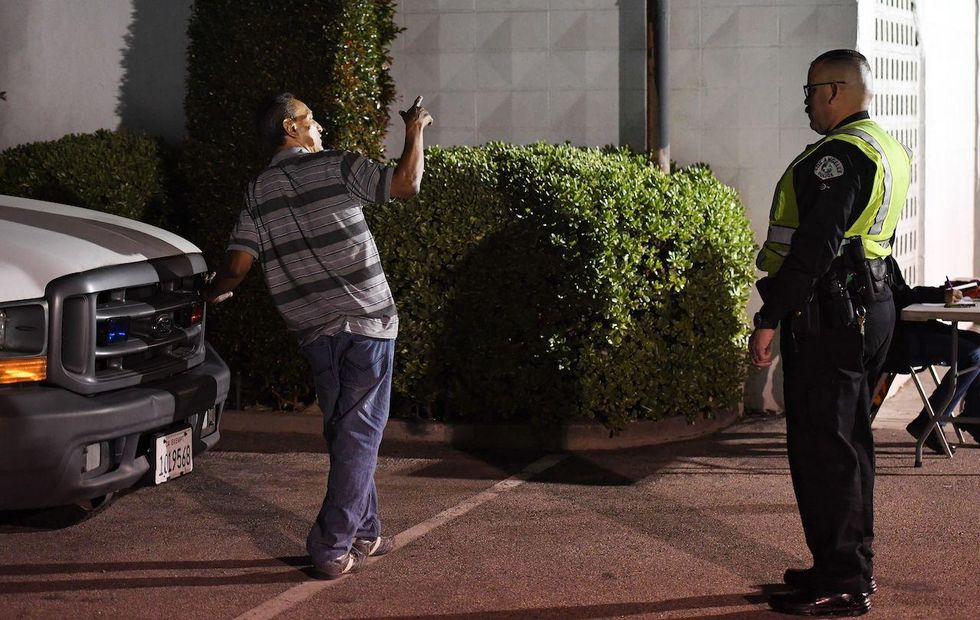
A California-based company has created a device that might help law enforcement detect drivers who are driving under the influence of marijuana. (Mark Ralston/AFP/Getty Images)

As the legalization of marijuana for medicinal and recreational use continues to expand across the country, so does the concern that stoned drivers are putting lives at risk on the roadways.
Hound Labs, a California-based company, has created a device that might help law enforcement detect drivers who are driving under the influence of marijuana.
"We are trying to make the establishment of impairment around marijuana rational and to balance fairness and safety," Hound Labs CEO Mike Lynn told NPR recently.
Nine states and the District of Columbia have legalized the recreational use of marijuana, and 30 states allow its use for medicinal purposes.
The device is housed in a small plastic box about the size of a large cellphone, NPR reported.
If an officer suspects someone may be under the influence, the officer would place a disposable cartridge inside the device and ask the person to blow into the clear tube on one end for 30 seconds.
After the person blows, the cartridge is removed and placed inside a base unit that will determine the results within minutes. If it detects THC, the component in marijuana that causes the "high," on a person's breath, it would display "warning." If there's no THC detected, it would display, "pass." The device can also detect alcohol.
The device, NPR reported, can determine whether a suspect has smoked pot in the last two hours, which experts believe is the peak impairment time for marijuana.
"When you find THC in the breath, you can be pretty darn sure that somebody smoked pot in the last couple of hours," Lynn explained to NPR. "And we don't want to have people driving during that time period or, frankly, at a work site in a construction zone."
The device accurately measures THC in breath molecules in parts per trillion, Lynn said. Alcohol is measured in parts per thousand.
While it can detect THC, it cannot determine how much THC was consumed.
Police don't have an accurate way to determine weed-impaired drivers.
The number of fatal crashes involving drivers who tested positive for marijuana has more than doubled since 2013, according to federal and state data analyzed by the Denver Post, and the increase corresponds with the legalization of pot:
The trends coincide with the legalization of recreational marijuana in Colorado that began with adult use in late 2012, followed by sales in 2014. Colorado transportation and public safety officials, however, say the rising number of pot-related traffic fatalities cannot be definitively linked to legalized marijuana.
A recent Colorado Department of Transportation survey showed 69 percent of cannabis users admitted to driving under the influence at least once in the past year.
"Forty percent of recreational users and 34 percent of medical users said they don't think being under the influence of marijuana affects their ability to drive safely. About 10 percent of all users believe marijuana makes them a better driver," according to the survey.
For police, "the key is objective data at the roadside, just like we have for alcohol," Lynn told NPR.
They could take blood, saliva, or urine samples, but the results can't determine whether the driver was impaired while driving because marijuana can stay in a person's system up to a month.
The device "will help ensure safety on our roads and in the workplace while also promoting fairness to people who use marijuana legally and responsibly," Hound Labs marketing manager Louisa Ashford told USA Today in a statement.